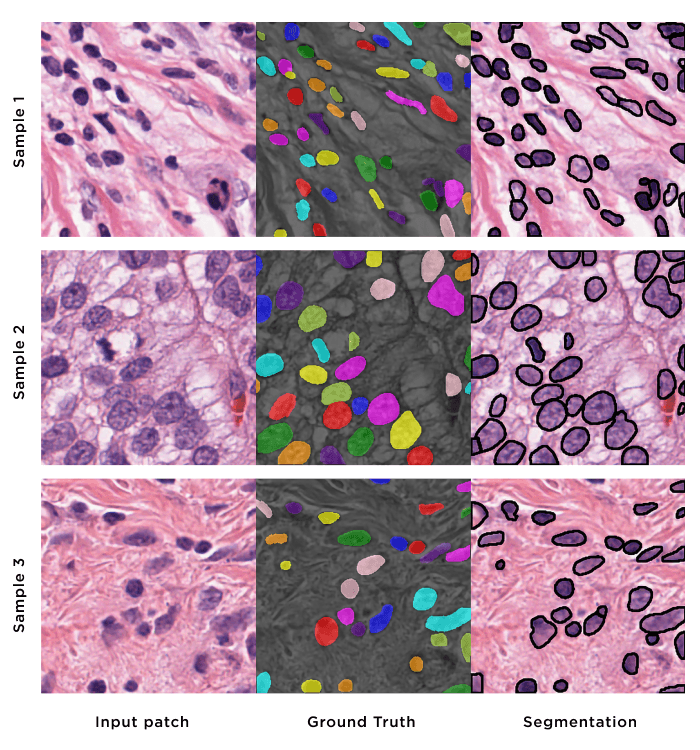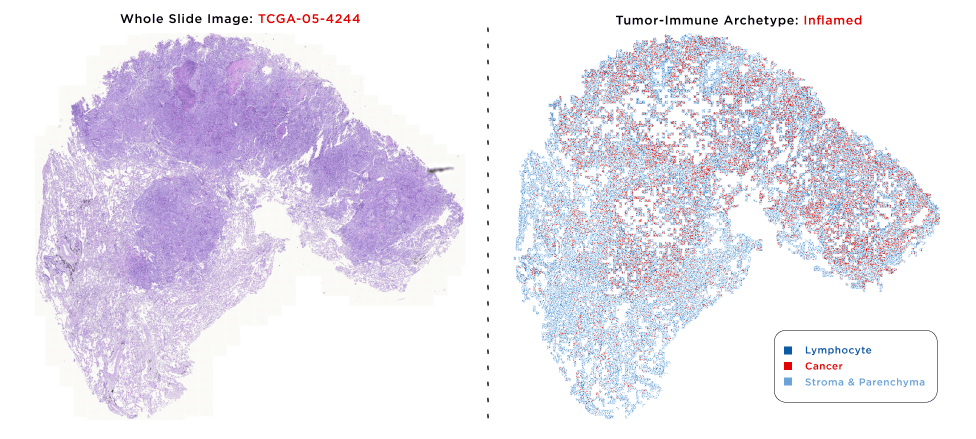Harnessing AI for Histopathology: A Leap Towards Precision Medicine
Overcoming Challenges in Digital Pathology
Despite its promise, the integration of AI into histopathology faces several challenges.
Accurate detection and segmentation of regions of interest in tissue images are crucial. There are also technical and regulatory hurdles to overcome when implementing AI solutions in clinical settings. Additionally, developing interpretable AI models that clinicians can trust remains an ongoing quest.
Moreover, the vast amount of data generated by whole slide images (WSIs) necessitates efficient processing algorithms that can handle the complexity and scale of the data without compromising accuracy.
The Quantori AI-Driven Workflow for Histopathology
At Quantori, in partnership with a leading pharmaceutical company, we developed a cutting-edge approach to histopathology image processing. This approach focuses on an AI-enabled histopathology workflow (shown below) to classify the immunological phenotype of WSIs human solid tumors.
 Diagram of the AI histopathology workflow solution
Diagram of the AI histopathology workflow solution
This workflow comprises several stages:
1. Entropy-based Slicing: The process begins with partitioning input WSIs into smaller patches. These patches are filtered using specific entropy-based criteria to keep only those deemed relevant for further analysis.

Partitioning of a WSI. Entropy-based conversion of a WSI into a subset of patches, highlighting relevant regions for further analysis
2. Nucleus Segmentation: Utilizing HoVer

Nucleus segmentation stage: HoVer
3. Nucleus Feature Extraction: This involves analyzing segmented nuclei to extract various features, such as contour, texture, and spatial attributes, which are crucial for accurate classification.
4. Nucleus Classification: An AutoML-based ensemble of supervised machine learning algorithms then classifies nuclei into categories such as Lymphocyte, Cancer, Stroma, or Parenchyma, based on the extracted features.
5. Tumor-Immune Archetype Classification: Finally, the workflow classifies the WSI into one of three immunological
This
A potential cancer case is shown below. The original WSI is on the left, and the segmented cells with the predicted tumor-immune archetype are on the right.

AI-driven histopathology pipeline output. Comparison of an original WSl (left) with segmented cells and predicted tumor-immune archetype classification (right), demonstrating the precision of the proposed
The Future of Histopathology with AI
Our solution addresses digital pathology challenges by showcasing a workflow that achieves high accuracy in classifying tumor-immune archetypes, while remaining interpretable and clinically relevant. By developing AI solutions that are both powerful and practical for clinical use, we can move closer to a future where histopathology and other medical areas are more precise, efficient, and consistent.
Integrating AI into histopathology marks a significant leap towards precision medicine. Diagnoses become more accurate, treatments more effective, and patients care tailored to unique biological makeup. As AI technologies evolves, their potential to transform histopathology and other areas of medicine is boundless, heralding a new era of smarter, faster, and more patient centered healthcare.

